ORAL HISTORY: Parsons House Fire Was ‘Worth It’
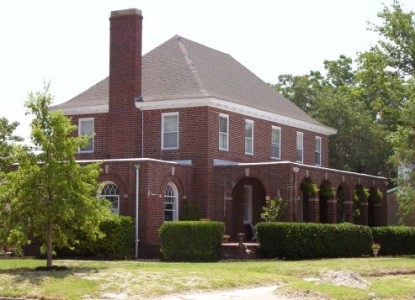
Parsons House burned c. late 1970s. The five dormers were lost along with the Chippendale railing around the upper porch and the slate roof. The house is now the Chesapeake Bay View Bed & Breakfast.
August 18, 2014
(EDITOR’S NOTE: Cape Charles Historical Society has for more than a decade been recording oral histories of the area’s earlier days. A grant from the Virginia Foundation for the Humanities enabled 15 interviews to be transcribed, and the Historical Society has made this one available for readers of the Wave. All the transcriptions may be read at the Cape Charles Museum.CLICK to read previous oral histories in the Wave.)
1990 Interview of Virginia Fitzhugh conducted by Virginia Savage
PART FIVE
VIRGINIA SAVAGE: Where was the Fitzhugh house?
VIRGINIA FITZHUGH: Right there on the corner where Shrieves lives [southwest corner of Randolph and Peach].
The yellow house on the corner of Peach and Randolph. And that’s where you started housekeeping. Did Mr. Fitzhugh build that house?
No. That house was built by Dr. Kellam, the doctor that was in Cape Charles. And Mr. Fitzhugh bought it from him.
Now the house next to that where the Johnsons lived now. And the next house was Harold Smith’s.
That’s right. That was a boarding house.
That was an old Federal type building there [torn down in the ’80s]. Do you remember when the Mack buildings were built?
Yep. They were built late. I would say ’30s or ’40s.
Do you remember when Mr. Parsons built his house on the beach? Mr. Russell Parsons . . . Miss Alice Parsons. The one the second floor burned probably during the late ’70s.
I don’t know how old I was when that was built.
That was such a gorgeous house. What a calamity that it burned. [The five dormers were lost, the Chippendale railing around the upper porch and a wonderful slate roof.]
Listen, it was worth it. They got so much money back, because it had gone perfectly terrible and they didn’t have the money to fix it. But how in the world they got so much insurance money — it’s like an almost entirely new house inside. I tell you, Virginia, Miss Alice Parsons had property but I don’t think she had much cash. Because she was a working woman. She had all those apartments up over where Harold Smith had his hardware store. And up there where the Eastern Star was. [Parson building on Mason.] See they had apartments up there. They owned all these big houses at the end of Tazewell.
CONTINUED FROM FIRST PAGE
I never thought Harold exactly managed those buildings very well.
Miss Parsons worked hard and she took care of Mrs. Drennon. Mr. and Mrs. Drennon lived up on the 200 block of Tazewell. Mrs. Drennon went to live with Miss Parsons I guess after Mr. Parsons died. Mrs. Drennon was a widow. [Mr. Drennon made wonderful models of tugs, ferries, etc.]
I loved Miss Drennon. She used to work upstairs in the office at Wilson’s Store. And she was the sweetest lady. So was Miss Parsons.
So come on down Tazewell Avenue, and the Parsons that is going rack and ruin right now in the 400 block, is that the same Parsons family? [This was Carol Parsons’ next door to Mr. Jim Wilson. Leon Parham later had a B&B there — now Bay Haven Inn.]
No. They are not the same. Russell and Charlie. They may have been Virginia “woodpiled,” but not close relation.
Mr. Jim Wilson built the house there on the corner. Now, come on across the street — Mrs. Webster lived there. [On the corner of Peach and Tazewell.] McIlvaines built that. People by the name of McIlvaine.
Regis Etz’s father Otto sold to Lenora Mitchel’s father. Across the street from that, Miss Iva Jones was living in that house, but a Parsons built that house. Aunt Eva [an aunt of Miss Gladys Nottingham, the librarian for years who lived next door] and her husband built that house and Evelyn Parsons sold that house to Miss Iva Jones.
“That’s right.”
Now, which Parsons was Carol Parsons?
I don’t know, but he wasn’t in the Parsons that was Miss Alice’s. Now he could have “woodpiled,” as they say way back, but it wasn’t brother, sister, or something like that.
I knew that Parsons is kin to Ticks [George Francis] Parsons’ family but I didn’t think that Alice’s Russell Parsons was as closely related to them.
Now, Ticks is in the Parsons with Ethel May. [Her mother was Mr. Sank Parsons’ sister.] See, Ethel May and Ticks are first cousins.
Let’s get back up on the beach. And the house between what is known as the Trower House and the Russell Parsons’ House was known as the annex to the hotel when I came over here.
Well, I’ll tell you who built that. That was the Berrys built that. I think he worked for the railroad.
Later on, her husband built the house all the way up the beach, the last house to the north.
That’s right. Mr. Berry built that and then next was Mrs. Russell Parson’s house and then Mr. Jack Moore built the house, of course, where it is. [Bayholme where Ann Heyward and Bill Walker now live.]
And they built that when? In 1914?
It wasn’t too long after they opened up the beach front that was built. All those houses were built. [This was known as the Cottage Addition until it was filled in and the houses built on pilings. It was mostly marsh with a pond on Tazewell that was used for ice skating.]
An amazing fact to me is that Mr. George Savage, my father-in-law, bought his lot in 1929 and paid $6,000 for it. That was a lot of money for a lot in 1929!
You know Effie Fuqua. Her mother and father didn’t want her to marry Mr. Fuqua, but they did and they wanted to buy Mr. Berry’s house. And the mother wouldn’t put the money up (Mr. Fuqua’s mother). So she bought him that lot and that house and Effie told me that house and the lot was $5,000 and put that house on it.
Mr. Savage has a nice size lot, more lot than they do. But it’s hard to believe that it changed that radically that quickly, isn’t it.
Well, Virginia, it’s like everything else. When people think you want something, that’s when you’re going to go up. Just like that lot next to us that we bought, between us and the house next door. Well, that belonged to a man down the road and he wanted to sell it. Well, he asked Francis about it and Francis said, yes, he wanted to buy it to protect us. Well, he quoted one price and then he said his mother didn’t want to sell it. His mother owned it. He told us another price and so he came up to $2,000. Now Francis told him, I’ll buy it, but don’t come to me again. This is it. So he said, if you’ll pay the brokerage fee, too, then I’ll sell it. I would say that was 30 years ago. Then we could have bought the house right next to it.
Now that’s where Miss Effie Milligan and Miss Sweenie lived.
That was a good buy because we told John Milligan, if ever you want to sell that house, Francis says, give me the first refusal. And so Miss Effie and Miss Sweenie died so of course John took over. He offered it to us for $15,000, Virginia — a brick house now. And he left the washing machine and the dryer. They had baseboard heat and everything put in. Well, we were going to buy it. But this Elizabeth Whitehead and her friend, John told us, now I don’t know why you all are buying this house, but two ladies would love to buy it. They want to move back to Cape Charles from the city. So Francis said let us talk about it and we’ll let you know tomorrow. So we were buying not because we wanted the house, but just to safeguard who was living next door to you. So we said well if this Elizabeth Whitehead, we knew the family and all, if she wanted to buy it, then go ahead and sell it. But they did a lot of work on it. That was her name, they lived down the road. Her sister bought the house next to the McMath house, that big brick house there.
TO BE CONTINUED


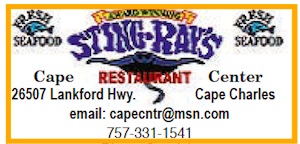
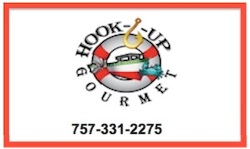
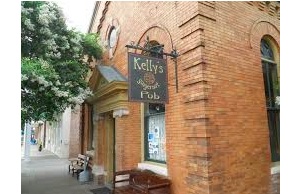
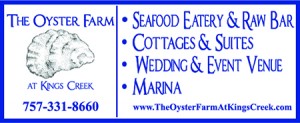
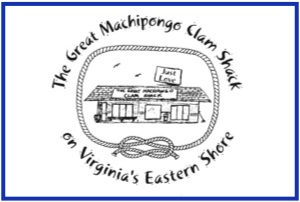
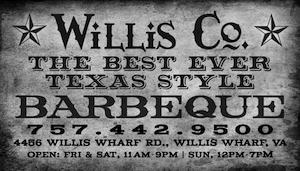
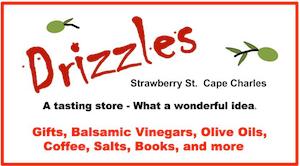
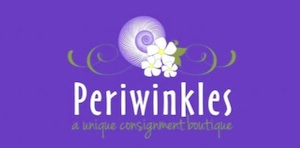


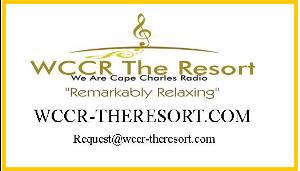



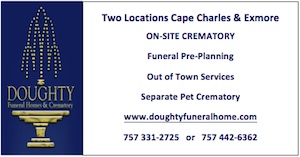



Comments